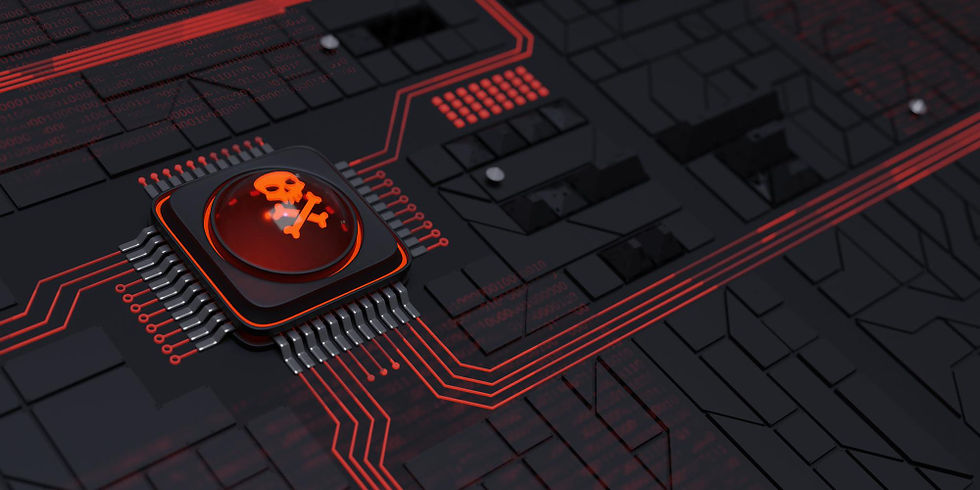Firmware-Level Malware: The Hidden Threat Below Your OS
- axaysafeaeon
- Jun 10
- 2 min read
Cybersecurity isn’t just about firewalls and antivirus software anymore. The real danger might be lurking much deeper, right below your operating system. Firmware-level malware is one of the most stealthy and dangerous forms of attack, and it’s gaining traction fast.

These threats bypass traditional defenses, embed themselves in your system’s foundation, and stay hidden for years. If you’re not paying attention to firmware, you're leaving your devices wide open.
What Is Firmware-Level Malware?
Firmware is the low-level software that lives in your hardware, like your motherboard’s BIOS or UEFI. It's the first code that runs when you boot your machine and controls how your system starts up and communicates with hardware components.
Firmware-level malware infects this critical layer, allowing attackers to:
Survive full OS reinstalls
Reinfect the system every time it boots
Avoid detection from most antivirus tools
Gain deep control over hardware behavior
This type of persistent malware doesn’t just sit there—it actively works to hide itself, disable security features, or even turn off updates.
BIOS and UEFI: Popular Targets
Older systems with outdated BIOS are particularly vulnerable. But even modern devices using UEFI (Unified Extensible Firmware Interface) can be compromised, especially if security settings are weak or Secure Boot is disabled.
A BIOS attack can rewrite firmware code, change boot orders, or install a rootkit that runs before your OS. Once it’s there, it’s almost impossible to remove without specialized tools or re-flashing the hardware.
Why It Matters
Firmware attacks are not science fiction—they’re real. Nation-states, cybercriminals, and advanced threat actors are actively exploring these methods for:
Espionage
Long-term surveillance
Supply chain compromise
Disabling critical infrastructure
Because firmware operates outside the OS, attackers can move undetected for months, even years. And since firmware updates aren’t part of regular patch cycles, many organizations don’t even know their devices are vulnerable.
Signs of a Firmware-Level Compromise
These threats are hard to detect, but here are a few warning signs:
Antivirus tools constantly fail or get disabled
Systems re-infect after a clean OS reinstall
Boot times become inconsistent
BIOS/UEFI settings change without user input
Most detection tools run after the system boots, exactly where firmware malware hides.
How to Strengthen UEFI Security and Detection
🛡️ Enable Secure Boot – It prevents unsigned or tampered firmware from loading.
🛡️ Use firmware scanning tools – Solutions like CHIPSEC or vendor-provided tools can help detect known threats.
🛡️ Update BIOS/UEFI regularly – Always install the latest firmware patches from your device manufacturer.
🛡️ Monitor for rootkit behavior – Use advanced EDR tools with low-level behavior detection.
🛡️ Restrict physical access – Firmware can be modified through direct access to the machine.
Final Thoughts
Firmware-level malware is the cybersecurity threat you can’t afford to ignore. It hides below your OS, dodges your tools, and takes advantage of outdated or unprotected hardware. With risks like BIOS attacks, rootkit infections, and full hardware compromise, securing your firmware is no longer optional it’s critical.
Whether you're a business or an individual, now is the time to audit your systems, strengthen your UEFI security, and protect against this silent threat living deep in your devices.



Comments